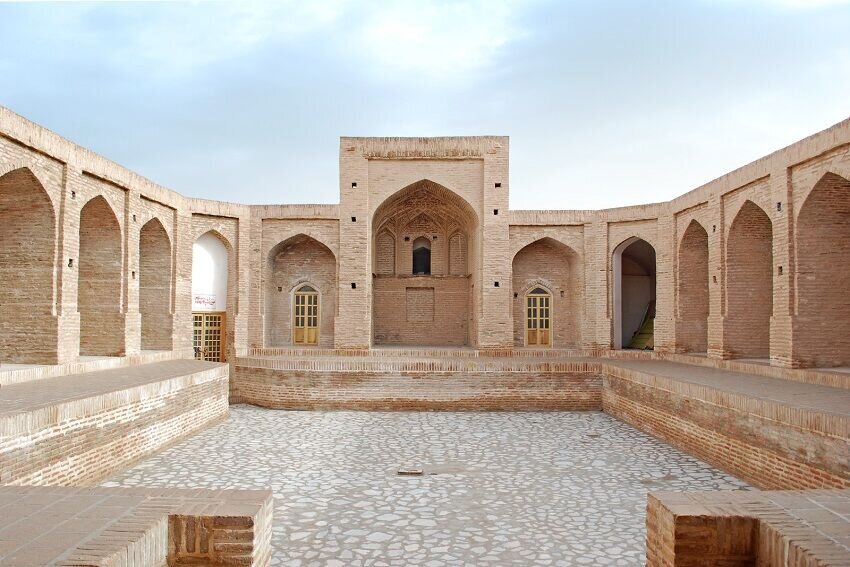Sarayan caravanserai eyes UNESCO status

TEHRAN—Sarayan caravanserai, a Safavid era (1501-1736) mud-brick inn in eastern Iran, has joined a shortlist of historical caravanserais the country is hoping to win UNESCO recognition for.
Last year, the monument and a cistern nearby underwent extensive restoration work in preparation for being assessed by UNESCO experts, according to Sarayan’s tourism chief.
Global registration of such historical monuments could contribute to their preservation and protection, while it would lead to increased economic prosperity for the region by attracting more tourists, Mohammad Arab as said.
Located in the eastern province of South Khorasan, Sarayan caravanserai is one of the oldest tourist attractions of the city, which is still in use.
Within the caravanserai, which was listed on the National Heritage list in 2003, is the Sarayan Museum of Anthropology.
According to the tourism ministry, Iran has compiled a dossier for a selection of its historical caravansaries for a possible inscription on the UNESCO World Heritage list.
In this regard, cultural heritage experts assessed such monuments that are scattered across the country to make a shortlist in terms of their architecture and historical and cultural values.
Caravanserai is a compound word combining “caravan” with “Sara”. The former stands for a group of travelers and Sara means the building. They often had massive portals supported by elevated load-bearing walls. Guest rooms were constructed around the courtyard and stables behind them, with doors in the corners of the yard.
Iran’s earliest caravanserais were built during the Achaemenid era (550 - 330 BC). For many travelers to Iran, staying in or even visiting a centuries-old caravanserai can be a wide experience as they have an opportunity to feel the past, a time travel back into a forgotten age.
South Khorasan is home to many historical and natural attractions, such as Birjand Castle, Dragon Cave, Furg Citadel, and Polond Desert. It is also known for its famous rugs as well as its saffron and barberry, which are produced in almost all parts of the province.
AM
